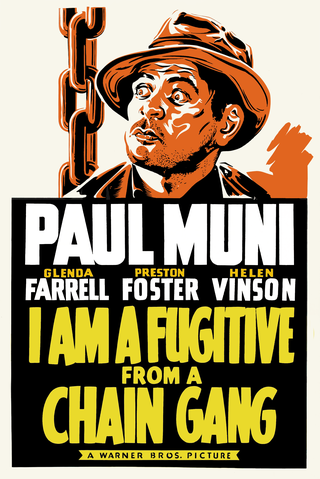
I Am a Fugitive from a Chain Gang is a 1932 American pre-Code crime tragedy film directed by Mervyn LeRoy and starring Paul Muni as a convicted man on a chain gang who escapes to Chicago. It was released on November 10, 1932. The film received critical acclaim and was nominated for three Academy Awards including Best Picture and Best Actor for Muni.

This is a list of notable events in music that took place in the year 1933.
The following is an overview of 1930 in film, including significant events, a list of films released and notable births and deaths.
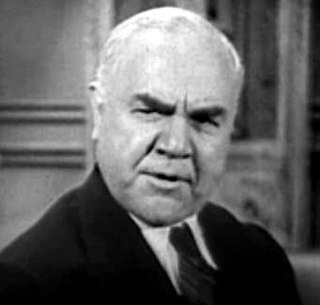
Berton Churchill was a Canadian stage and film actor.

Silver Streak is a 1976 American thriller comedy film, about a murder on a Los Angeles-to-Chicago train journey. It was directed by Arthur Hiller, written by Colin Higgins, and stars Gene Wilder, Jill Clayburgh, and Richard Pryor, with Patrick McGoohan, Ned Beatty, Clifton James, Ray Walston, Scatman Crothers, and Richard Kiel in supporting roles. The film score is by Henry Mancini. This film marked the first pairing of Wilder and Pryor, who were later paired in three other films.

Charles Sherman Ruggles was an American comic character actor. In a career spanning six decades, Ruggles appeared in close to 100 feature films, often in mild-mannered and comic roles. He was also the elder brother of director, producer, and silent film actor Wesley Ruggles (1889–1972).
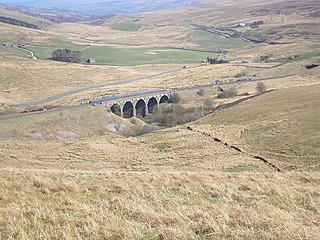
The Hawes Junction rail crash occurred at 5.49 am on 24 December 1910, just north of Lunds Viaduct between Hawes Junction and Aisgill on the Midland Railway's Settle and Carlisle main line in the North Riding of Yorkshire, England. It was caused when a busy signalman, Alfred Sutton, forgot about a pair of light engines waiting at his down (northbound) starting signal to return to their shed at Carlisle. They were still waiting there when the signalman set the road for the down Scotch express. When the signal cleared, the light engines set off in front of the express into the same block section. Since the light engines were travelling at low speed from a stand at Hawes Junction, and the following express was travelling at high speed, a collision was inevitable. The express caught the light engines just after Moorcock Tunnel near Aisgill summit in Mallerstang and was almost wholly derailed.
AFI's 100 Years...100 Stars is the American Film Institute's list ranking the top 25 male and 25 female greatest screen legends of American film history and is the second list of the AFI 100 Years... series.

If I Had a Million is a 1932 American pre-Code Paramount Studios anthology film starring Gary Cooper, George Raft, Charles Laughton, W. C. Fields, Jack Oakie, Frances Dee and Charlie Ruggles, among others. There were seven directors: Ernst Lubitsch, Norman Taurog, Stephen Roberts, Norman Z. McLeod, James Cruze, William A. Seiter, and H. Bruce Humberstone. Lubitsch, Cruze, Seiter, and Humberstone were each responsible for a single vignette, Roberts and McLeod directed two each, and Taurog was in charge of the prologue and epilogue. The screenplays were scripted by many different writers, with Joseph L. Mankiewicz making a large contribution. The film is based on the 1931 novel Windfall by Robert Hardy Andrews.

Born to Dance is a 1936 American musical film directed by Roy Del Ruth and starring Eleanor Powell, James Stewart and Virginia Bruce. It was produced and distributed by Metro-Goldwyn-Mayer. The score was composed by Cole Porter.

The Great Locomotive Chase is a 1956 American adventure western film produced by Walt Disney Productions, based on the Great Locomotive Chase that occurred in 1862 during the American Civil War. Filmed in CinemaScope and in color, the film stars Fess Parker as James J. Andrews, the leader of a group of Union soldiers from various Ohio regiments who volunteered to go behind Confederate lines in civilian clothes, steal a Confederate train north of Atlanta, and drive it back to Union lines in Tennessee, tearing up railroad tracks and destroying bridges and telegraph lines along the way.
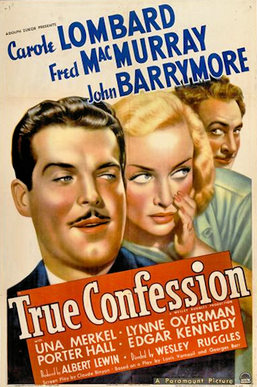
True Confession is a 1937 American screwball comedy film directed by Wesley Ruggles and starring Carole Lombard, Fred MacMurray, and John Barrymore. It was based on the 1934 play Mon Crime, written by Georges Berr and Louis Verneuil. In 1946 it was remade as Cross My Heart.
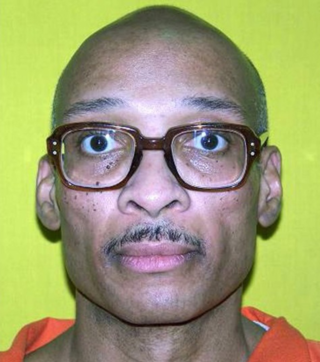
Ronald Adrin Gray is an American serial killer and rapist whose convictions include four counts of murder, one count of attempted murder and eight counts of rape. His crimes were committed when he was in the United States Army, stationed at Fort Bragg, North Carolina.
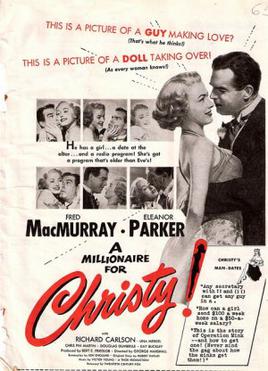
A Millionaire for Christy is a 1951 American comedy film directed by George Marshall and starring Fred MacMurray, Eleanor Parker and Richard Carlson. The film is a screwball comedy, in which Christy Sloane (Parker) is a legal secretary from San Francisco who is sent to Los Angeles to inform radio host Peter Lockwood (MacMurray) that he has just inherited $2 million.
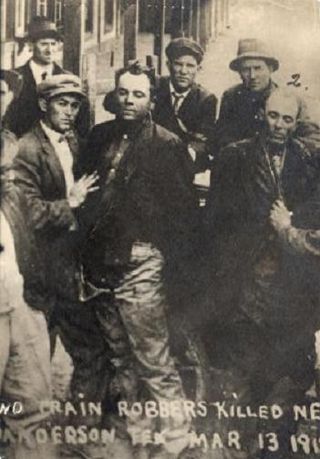
The Baxter's Curve Train Robbery, also known as the Sanderson Train Robbery, occurred in 1912 near the town of Sanderson, Texas. Ben Kilpatrick and his partner, Ole Hobek, attempted to rob a Southern Pacific express car, but they were stopped by one of their hostages, David A. Trousdale, who managed to kill both of the bandits.

Sleepers West is a 1941 American mystery drama film directed by Eugene Forde and starring Lloyd Nolan, Lynn Bari and Mary Beth Hughes. This second entry in 20th Century-Fox's Michael Shayne series was a remake of the 1934 Fox romantic drama Sleepers East from the novel Sleepers East (1933) by Frederick Nebel. The film Michael Shayne - Private Detective (1940) was the first in a series of 12 films. Lloyd Nolan starred as Shayne until the series was dropped by Twentieth Century-Fox and picked up by PRC. In the PRC series, Hugh Beaumont played Shayne.

The Chaperone is a 2018 period drama film, directed by Michael Engler, with a screenplay by Julian Fellowes, from the novel by Laura Moriarty. It stars Elizabeth McGovern, Haley Lu Richardson, Miranda Otto, Blythe Danner, Campbell Scott, Géza Röhrig and Victoria Hill.

The Harvey train collision took place on October 12, 1979, when the Shawnee train operated by Amtrak between Carbondale and Chicago Union Station crashed into a parked Illinois Central Gulf freight train, leading to the death of two crew members.
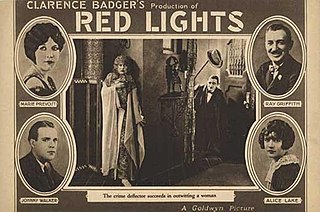
Red Lights is a 1923 American silent mystery film directed by Clarence G. Badger and starring Marie Prevost, Raymond Griffith and Johnnie Walker. The plot concerns a railroad tycoon who is about to be reunited with his daughter who was kidnapped many years ago.

















